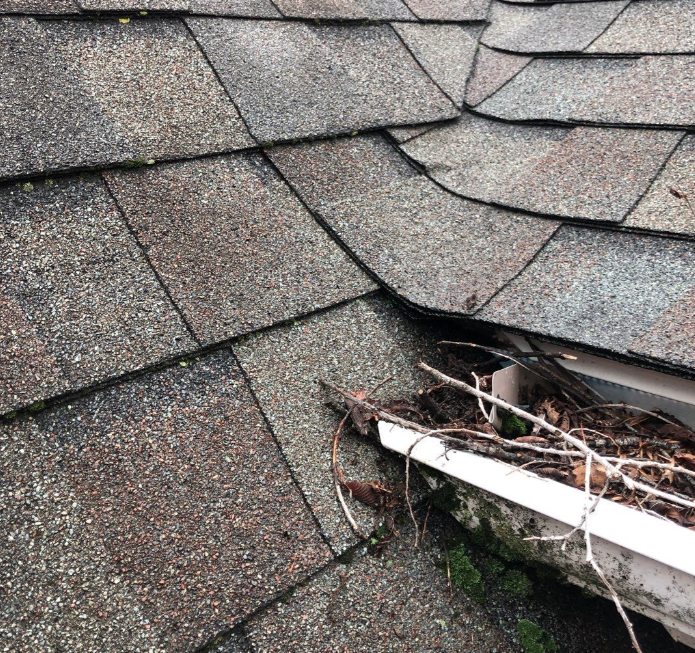Don’t you wish “out of sight out of mind” worked for everything?
But, unfortunately, it doesn’t. And that includes gutters. Some people wait until water gushes from the wrong place or someone points to a tree growing out of them.
Either way, let’s consider why they’re so essential. First of all, gutters are not just for looks. They serve a vital role in protecting your house and yard. Just as important, they move rain from your roof away from your home’s exterior and foundation. Poor or no gutters could damage your siding. They could also cause structural issues and even basement leaks or flooding (which can cause mold and mildew).

Gutters protect not only your foundation but also your yard. Pooling water can erode soil causing ditches or pooling, which kills grass and flowers.

Here are some frequently asked questions about gutters.
Does Every Roof Have Gutters?
Most roofs have gutters, but there are some exceptions. Gutters were invented somewhere between 3,000 BC and 1500 BC! But the modern ones we’re talking about became more widely used between 1900 and 1925 when the metal rolling machine came out. So some historic homes built before then may not have them. However, that doesn’t mean they can’t be installed.

Roofs with an extreme pitch and long overhang may not have them either. If you have one of these homes and experience flooding, siding damage, or soil erosion, you may want them installed.
Remember, gutters are only installed at the bottom of a roof pitch and not all the way around.
Even a Flat Roof?
Yes. Flat roofs can have gutters. They are cost-effective but can clog easily. Another drainage system is called scuppers. A large square opening is made along the roof edge, usually with downspouts below to catch and direct the water away from the building.
Finally, some flat roofs use an interior drain system, not unlike a shower drain. They are placed where the water pools and drains it into pipes below the roof and through a downspout.
Do all New Homes Come With Gutters?
Believe it or not, they don’t. According to Paula Hickey of Beazer Homes, “Depending upon the specification level of the community you build in gutters are not necessarily included in the base price of your home. In some communities, front gutters are included. In others, there are downspouts provided. In yet others full gutters are provided.” The bottom line? Read the fine print!
Is Builder-Grade Good Enough?
If you’re building a new house, consider what’s essential to upgrade. Remember the adage, “you get what you pay for.” So, when shouldn’t you cut corners? When it comes to something that could compromise your home’s structure and integrity.
Do all New Roofs Come With New Gutters?
Believe it or not, no. Some roofers will rehang the old gutters on a new roof system. That’s important to keep in mind when getting an estimate. Homeowners often call to get their gutters replaced not long after the roof goes on. It’s best to get one estimate that includes both.
I Just Bought a New House. Should I Have My Gutters Checked?
Absolutely. You may not know how old your gutters are, what’s in them, or if they are secure. If you just bought a new house, it’s a good idea to have the roof and gutters inspected to get the most life out of them.
Now that you know why you have them, what about maintaining them? Having clogged gutters is as bad as having no gutters. If they’re clogged, notice where the water runs over. It could still go right to your foundation!
When Should You Clean Your Gutters?
Spring and fall is the best time for gutter maintenance. Of course, you could do it yourself, but do you really want to climb a ladder, remove the clogs, climb back down, move the ladder a few feet and repeat the process until you clean the whole system?
It’s worth hiring a professional for safety and peace of mind. While the roofer is up there, they can make sure everything is secure. A professional can also recommend a guard if you need one.
Don’t wait until you have damage to take care of such an integral part of your roofing structure. Call us at 410-229-9934 to schedule your estimate and discuss options.


